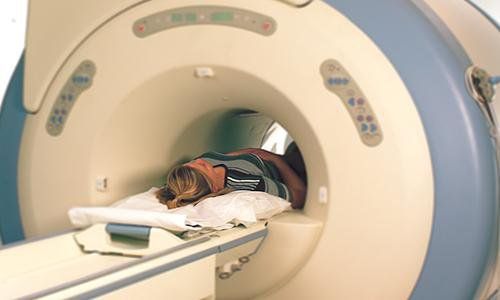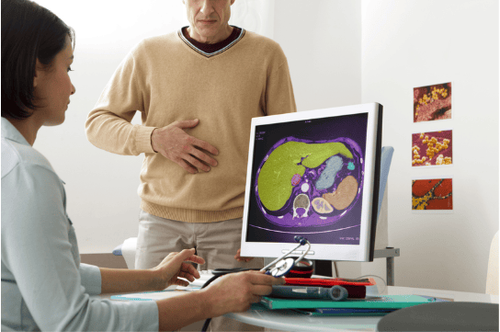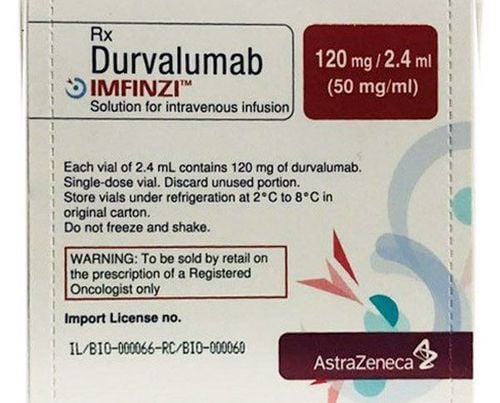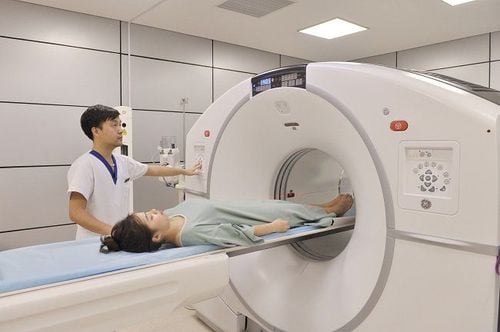This is an automatically translated article.
The article is written by Master, Doctor Mai Vien Phuong - Gastroenterologist - Department of Medical Examination & Internal Medicine - Vinmec Central Park International General Hospital.Positron emission tomography (or PET scan) is an imaging technique that helps evaluate the function of tissues and organs. PET scans are useful in detecting or evaluating a number of conditions such as: Cancer, heart disease, and brain disorders. Lung problems can also be detected by a doctor after a PET lung scan.
1. What is a PET lung scan?
Positron emission tomography (PET) is a sophisticated medical imaging technique. It uses a radioactive tracer to pinpoint differences in tissues at the molecular level. Whole-body PET scans can detect differences in body functions; such as blood flow, oxygen use, and absorption of sugar molecules (glucose). This allows the doctor to see how the organs are working.For lung problems, the doctor can look more specifically at the lung area while interpreting the PET scan images.
A PET lung scan is often combined with a CT lung scan to detect conditions such as lung cancer. The computer combines information from the two scans to provide a three-dimensional image, highlighting any areas with particularly fast metabolic activity. This process is called image merging. The scan allows your doctor to distinguish between benign (non-cancerous) and malignant (cancerous) masses.
2. How is a PET lung scan done?
For a PET lung scan, you are given a small intravenous injection of glucose containing a radioactive tracer about an hour before the scan. Usually, an isotope of the element fluorine is used. The needle may cause a temporary sting.Once in the bloodstream, the tracer builds up in your organs and tissues and begins to emit energy in the form of gamma rays. A PET scanner detects these rays and creates detailed images from them. The images can help your doctor check the structure and functioning of the specific organ or area being scanned.
During the test, you need to lie on a narrow table. This table will slide inside a tunnel-shaped scanner. You can talk to the technicians while the scan takes place, but it's important to lie still while the scan is taking place. Too much movement can lead to blurred images. The scan takes about 20 to 30 minutes.
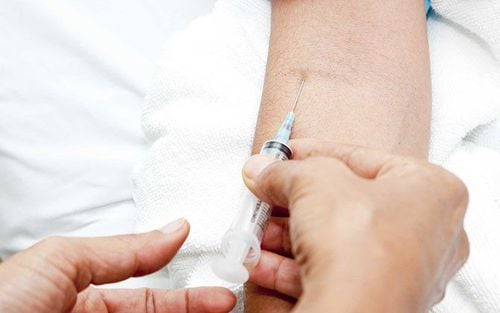
3. How to prepare for a PET lung scan?
Your doctor will ask you not to eat or drink anything other than water for a few hours before the scan. Adhering to this guide is very important. PET scans often depend on tracking small differences in the way cells metabolize sugar. Eating a snack or drinking a sugary beverage can affect the scan results.Upon arrival, you may be asked to change into a hospital gown or you may be allowed to wear your own clothes. You will need to remove any metal objects from your body, including jewelry.
Tell your doctor if you are taking medications or supplements. Certain medications; such as diabetes medications, can affect PET scan results.
If you are uncomfortable being in an enclosed space, your doctor may give you medicine to help you relax. This medicine may cause drowsiness.
PET scans use a small amount of radioactive tracer. The radioactive tracer wears off within a few hours or days. Eventually, it will pass out of your body in urine and feces.
Although exposure to radiation from a PET scan is rare, you should inform your doctor before having any procedure that uses radiation if you are pregnant or breastfeeding.
4. Diagnosis of lung cancer
After a physical exam, your doctor will tell you how to prepare for specific tests, such as:Imaging tests: An abnormal mass may be seen on an X-ray, MRI, CT scan and PET. These methods produce more detail and find smaller lesions. Sputum cytology: If you produce sputum when you cough, a microscope test can determine if there are cancer cells in it. A biopsy can determine if the tumor cells are cancerous. Tissue samples can be obtained by:
Bronchoscopy : During sedation, a tube is passed down your throat and into your lungs, allowing your doctor to examine you more closely. Mediastinoscopy: The doctor makes an incision at the base of the neck. A lighted instrument is inserted and surgical instruments are used to take samples from the lymph nodes. It is usually done while the patient is under general anesthesia. Needle biopsy: After using imaging tests as a guide, a needle is inserted through the chest wall and into the lung tissue, where cancer is suspected. A needle biopsy may also be used to check the lymph nodes. Tissue samples are sent to a pathologist for analysis. If the result is positive for cancer, the patient will have to have further tests; such as a bone scan, which can help determine if the cancer has spread and help determine the stage.
For this test, you will be injected with a radioactive substance. Areas of abnormal bone will then be highlighted on the image. MRI, CT, and PET scans are also used for staging.
5. PET lung scan and staging
Lung PET scans are also used to stage lung cancer. Tissues with a higher metabolic rate (higher energy use), such as lung cancer tumors, absorb more tracer than other tissues. These areas are prominent on the PET scan. Your doctor may use three-dimensional imaging to detect growing cancerous tumors.Solid cancerous tumors are assigned a stage from 0 to 4. Stage refers to how advanced a particular cancer is. For example, stage 4 cancer is more advanced, has spread further, and is often more difficult to treat than stage 0 or 1.
Stage is also used to predict outlook. For example, a person who is treated when diagnosed with stage 0 or 1 lung cancer is more likely to live longer than someone with stage 4 cancer. The doctor may also use images from a PET lung scan to determine the best treatment.
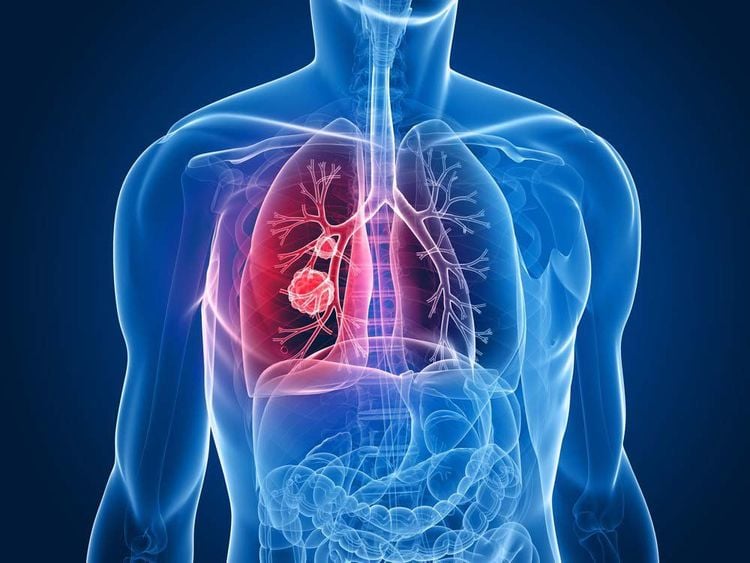
6. What are the symptoms of lung cancer?
The symptoms of non-small cell lung cancer and small cell lung cancer are essentially the same.Initial symptoms may include:
Cough that persists or gets worse. Cough with phlegm or blood. Chest pain that gets worse when you breathe deeply, laugh, or cough. Hoarse voice. Shortness of breath. Wheeze. Weakness and fatigue. Loss of appetite and weight loss. You can also get recurrent respiratory infections like pneumonia or bronchitis.
As the cancer spreads, other symptoms depend on where the new tumor is. For example, if in:
Lymph nodes: A lump is seen, especially in the neck or collarbone. Bones: Bone pain, especially in the back, ribs, or hips. Brain or spine: Headache, dizziness, problems with balance, or numbness in hands or feet. Liver: Jaundice of the skin and eyes. Tumors at the top of the lung can affect the facial nerves, leading to drooping eyelids, small pupils, or lack of sweating on one side of the face. These symptoms combined are known as Horner syndrome. It can also cause shoulder pain.
Tumors can press on the large vein that carries blood between the head, arms, and heart. This can cause swelling of the face, neck, upper chest, and arms.
Lung cancer sometimes produces a hormone-like substance, causing a range of symptoms known as paraneoplastic syndromes, including:
Muscle weakness. Nausea. Vomiting. Keep water. High Blood Pressure . High blood sugar. Confusion. Convulsions. Comatose. When experiencing symptoms of suspected lung diseases, you should go to reputable centers and hospitals for timely diagnosis and treatment. Currently, Vinmec International General Hospital has become a leading prestigious address in disease screening with modern techniques, proud to be the first private hospital in Vietnam to deploy diagnostic technology. Modern and accurate diagnosis with the most modern 128-segment PET/CT system in Southeast Asia, for accurate images and short scan time, the team of doctors are highly qualified and experienced professionals. creating trust for customers when experiencing medical examination and treatment services at Vinmec.
Please dial HOTLINE for more information or register for an appointment HERE. Download MyVinmec app to make appointments faster and to manage your bookings easily.





